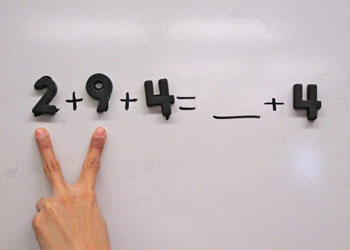
Engaging Mathematics: Hands-On Learning for Mastery
Mathematics can be a daunting subject for many students, but a hands-on approach can transform it into an engaging and enjoyable learning experience. In this article, we explore the benefits and strategies of hands-on mathematical learning that go beyond traditional methods.
The Power of Tangible Learning Tools
One of the key advantages of hands-on mathematical learning is the use of tangible tools. Manipulatives, such as counting blocks, geometric shapes, and measuring instruments, provide a concrete and visual representation of abstract mathematical concepts. This tactile experience helps students grasp ideas more effectively.
Making Abstract Concepts Tangible
Abstract concepts like algebraic equations or geometric theorems can be challenging to comprehend without a tangible connection. Hands-on activities, such as using algebra tiles or creating geometric models, bridge the gap between theory and reality. This approach allows students to see and feel the mathematics they are learning.
Fostering a Positive Learning Experience
Engagement is often the key to successful learning. Hands-on mathematical activities create an interactive and dynamic environment that captures students’ interest. This positive experience not only makes learning enjoyable but also contributes to a deeper understanding and retention of mathematical concepts.
Encouraging Collaboration and Communication
Hands-on learning naturally lends itself to collaborative efforts. Group activities and projects promote teamwork and communication skills. Students can discuss strategies, solve problems together, and explain their reasoning. This collaborative approach not only enhances mathematical understanding but also nurtures valuable interpersonal skills.
Real-World Application of Mathematical Concepts
One of the strengths of hands-on mathematical learning is its ability to connect theoretical concepts with real-world applications. By engaging in practical activities, students can see how mathematics is used in everyday life, making the subject more relevant and meaningful.
Adapting to Different Learning Styles
Every student has a unique learning style. Hands-on mathematical learning accommodates various preferences by providing a diverse range of activities. Whether visual, auditory, or kinesthetic, students can find approaches that resonate with their individual learning styles, promoting a more inclusive educational experience.
The Role of Technology in Hands-On Learning
In today’s digital age, technology can complement hands-on learning. Educational apps, interactive simulations, and virtual manipulatives offer additional avenues for students to explore mathematical concepts. Integrating technology enhances the hands-on experience, providing a modern and well-rounded approach to learning.
Hands-On Learning in the Digital Era
As we navigate the digital era, it’s crucial to adapt hands-on learning to the online environment. Virtual labs, interactive simulations, and online collaboration tools can bring the benefits of hands-on mathematical learning to remote or virtual classrooms. This adaptability ensures that students can still experience the tangible side of mathematics, even in a digital setting.
Implementing Hands-On Mathematical Learning Strategies
To implement effective hands-on mathematical learning, educators can incorporate a variety of strategies. These may include interactive lessons, project-based assessments, and the integration of manipulatives into the curriculum. By embracing these strategies, educators empower students to take an active role in their learning journey.
Exploring Further with Hands-On Mathematical Learning
For a deeper understanding of the impact of hands-on mathematical learning, explore Hands-On Mathematical Learning. Discover resources, activities, and insights that can enhance the mathematical learning experience for students of all ages.
In conclusion, hands-on mathematical learning is a powerful approach that transforms abstract concepts into tangible experiences. By leveraging tangible tools, fostering collaboration, connecting theory to real-world applications, and adapting to the digital era, educators can create a rich and engaging learning environment. To delve deeper into hands-on mathematical learning, visit www.igaseng.com for valuable resources and insights.



